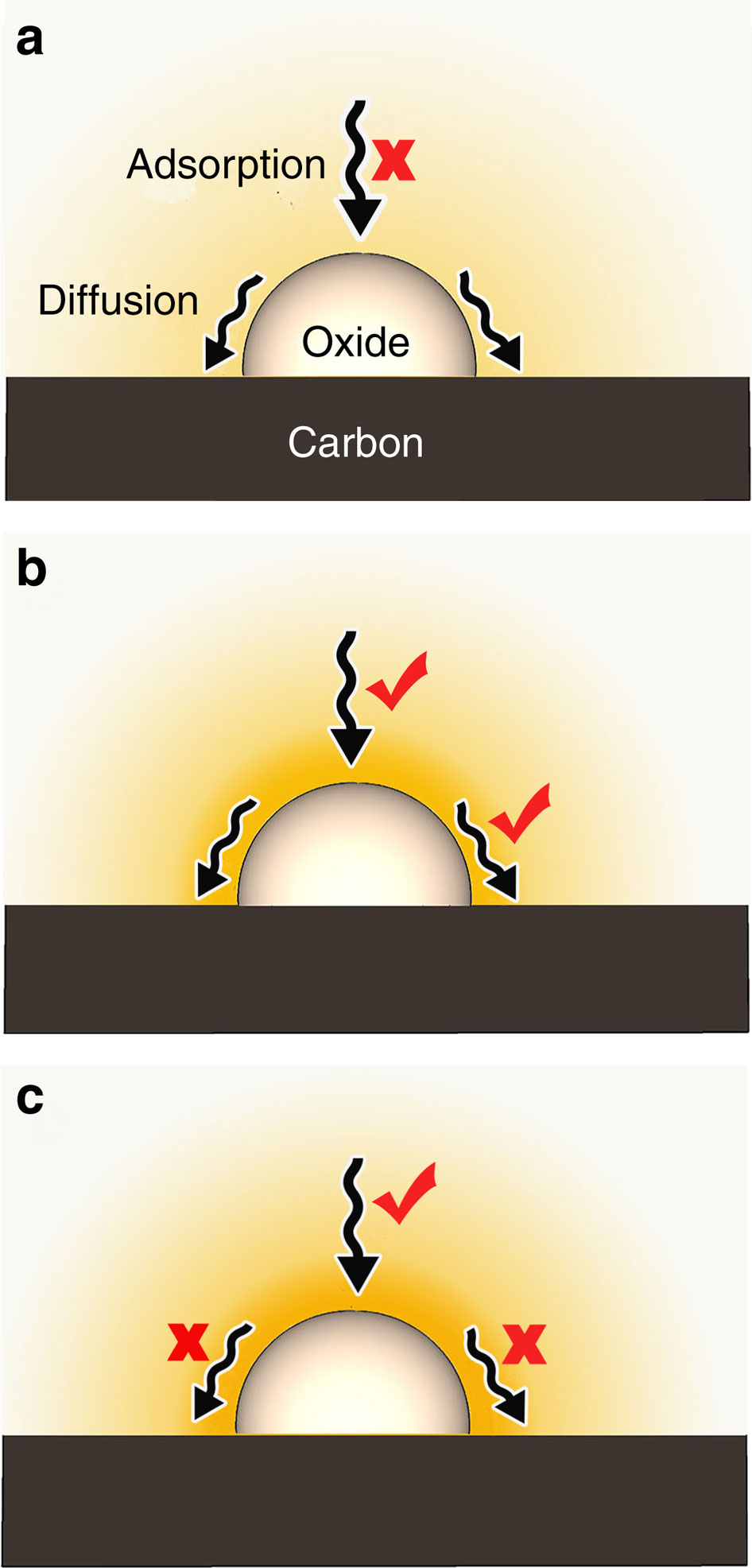当前位置:
X-MOL 学术
›
Nat. Commun.
›
论文详情
Our official English website, www.x-mol.net, welcomes your
feedback! (Note: you will need to create a separate account there.)
Balancing surface adsorption and diffusion of lithium-polysulfides on nonconductive oxides for lithium-sulfur battery design.
Nature Communications ( IF 14.7 ) Pub Date : 2016-Apr-05 , DOI: 10.1038/ncomms11203 Xinyong Tao 1, 2 , Jianguo Wang 3 , Chong Liu 2 , Haotian Wang 2 , Hongbin Yao 2 , Guangyuan Zheng 2 , Zhi Wei Seh 2 , Qiuxia Cai 3 , Weiyang Li 2 , Guangmin Zhou 2 , Chenxi Zu 2 , Yi Cui 2, 4
Nature Communications ( IF 14.7 ) Pub Date : 2016-Apr-05 , DOI: 10.1038/ncomms11203 Xinyong Tao 1, 2 , Jianguo Wang 3 , Chong Liu 2 , Haotian Wang 2 , Hongbin Yao 2 , Guangyuan Zheng 2 , Zhi Wei Seh 2 , Qiuxia Cai 3 , Weiyang Li 2 , Guangmin Zhou 2 , Chenxi Zu 2 , Yi Cui 2, 4
Affiliation

|
Lithium-sulfur batteries have attracted attention due to their six-fold specific energy compared with conventional lithium-ion batteries. Dissolution of lithium polysulfides, volume expansion of sulfur and uncontrollable deposition of lithium sulfide are three of the main challenges for this technology. State-of-the-art sulfur cathodes based on metal-oxide nanostructures can suppress the shuttle-effect and enable controlled lithium sulfide deposition. However, a clear mechanistic understanding and corresponding selection criteria for the oxides are still lacking. Herein, various nonconductive metal-oxide nanoparticle-decorated carbon flakes are synthesized via a facile biotemplating method. The cathodes based on magnesium oxide, cerium oxide and lanthanum oxide show enhanced cycling performance. Adsorption experiments and theoretical calculations reveal that polysulfide capture by the oxides is via monolayered chemisorption. Moreover, we show that better surface diffusion leads to higher deposition efficiency of sulfide species on electrodes. Hence, oxide selection is proposed to balance optimization between sulfide-adsorption and diffusion on the oxides.
中文翻译:

平衡锂硫电池设计中非导电氧化物上多硫化锂的表面吸附和扩散。
锂硫电池由于其比能量是传统锂离子电池的六倍而引起人们的关注。多硫化锂的溶解、硫的体积膨胀和硫化锂的不可控沉积是该技术的三个主要挑战。基于金属氧化物纳米结构的最先进的硫阴极可以抑制穿梭效应并实现受控的硫化锂沉积。然而,仍然缺乏对氧化物的清晰的机理理解和相应的选择标准。在此,通过简单的生物模板方法合成了各种非导电金属氧化物纳米颗粒装饰的碳片。基于氧化镁、氧化铈和氧化镧的阴极表现出增强的循环性能。吸附实验和理论计算表明,氧化物捕获多硫化物是通过单层化学吸附进行的。此外,我们表明更好的表面扩散导致电极上硫化物物质的沉积效率更高。因此,建议选择氧化物来平衡氧化物上的硫化物吸附和扩散之间的优化。
更新日期:2016-04-08
中文翻译:

平衡锂硫电池设计中非导电氧化物上多硫化锂的表面吸附和扩散。
锂硫电池由于其比能量是传统锂离子电池的六倍而引起人们的关注。多硫化锂的溶解、硫的体积膨胀和硫化锂的不可控沉积是该技术的三个主要挑战。基于金属氧化物纳米结构的最先进的硫阴极可以抑制穿梭效应并实现受控的硫化锂沉积。然而,仍然缺乏对氧化物的清晰的机理理解和相应的选择标准。在此,通过简单的生物模板方法合成了各种非导电金属氧化物纳米颗粒装饰的碳片。基于氧化镁、氧化铈和氧化镧的阴极表现出增强的循环性能。吸附实验和理论计算表明,氧化物捕获多硫化物是通过单层化学吸附进行的。此外,我们表明更好的表面扩散导致电极上硫化物物质的沉积效率更高。因此,建议选择氧化物来平衡氧化物上的硫化物吸附和扩散之间的优化。































 京公网安备 11010802027423号
京公网安备 11010802027423号